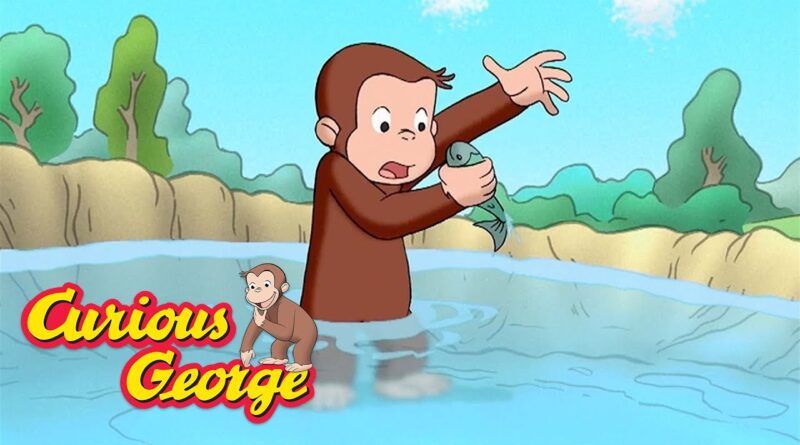How Did Curious George Die?
Curious George, the beloved character from the children’s books by H.A. Rey and Margret Rey, has captured the hearts of millions since his first appearance in 1941. Known for his inquisitive nature and mischievous antics, George has become a symbol of childhood curiosity and adventure. However, a question that occasionally surfaces in discussions about this iconic character is: “How did Curious George die?” This article explores the origins of this question, the legacy of Curious George, and the impact he has had on children’s literature and popular culture.
The Origins of Curious George
Before delving into the mystery surrounding his hypothetical demise, it’s essential to understand the origins of How did Curious George Die. Created by H.A. and Margret Rey, George first appeared in “Cecily G. and the Nine Monkeys” in 1939, and then starred in his own series starting in 1941. The Reys, both German Jews, fled Paris on homemade bicycles hours before the city fell to Nazi occupation during World War II, carrying the manuscript of what would become the first Curious George book.
The story of Curious George is deceptively simple: a young, inquisitive monkey is brought from his African home to the big city by The Man with the Yellow Hat. His curiosity often gets him into trouble, but it also leads to learning and growth. The charm of the stories lies in George’s playful nature and the gentle moral lessons that each tale imparts.
The Enduring Legacy of Curious George
Over the decades, Curious George has become more than just a character in children’s books. He is an integral part of American popular culture and a beloved figure worldwide. His influence extends beyond literature into television series, movies, and a wide range of merchandise. The universal themes of exploration, learning through experience, and the consequences of curiosity resonate with children and adults alike.
The enduring appeal of Curious George can be attributed to several factors. Firstly, the simplicity and purity of the stories make them accessible to young readers. Secondly, the character of George, with his endless curiosity and propensity for mischief, is both relatable and endearing. Lastly, the books’ illustrations, also created by the Reys, are colorful, engaging, and have a timeless quality.
The Question of George’s Demise
The question “How did Curious George die?” does not have a straightforward answer because, in the official book series, George does not die. This question seems to stem from a combination of urban legend, misinterpretation, and perhaps a darker aspect of adult humor. It’s important to recognize that children’s literature, especially in the era of Curious George’s creation, rarely dealt with the theme of death directly, particularly in a series centered around a character like George.
However, this question may also arise from a misunderstanding or misremembering of the books’ contents. In some of the Curious George stories, George faces dangerous situations, such as being kidnapped by poachers or floating away with a bunch of balloons. These scenarios, while resolved happily, might leave a lasting impression, particularly on young readers, leading to misconceptions about George’s fate.
Curious George in the Context of Children’s Literature
To fully appreciate the character of Curious George, it’s necessary to understand his place in the context of children’s literature. The mid-20th century, when George was created, was a time of significant evolution in this genre. Authors and illustrators were beginning to explore themes that went beyond the didactic and moralistic tales of the past. Characters like Curious George introduced a new dynamic: the child (or child-like character) as the protagonist, whose natural curiosity and tendency for mischief drive the narrative.
This shift was significant because it placed the child’s perspective at the forefront. It recognized that children’s experiences, thoughts, and feelings were worthy of exploration. Curious George, with his insatiable curiosity, represents the quintessential child, exploring the world around him with wonder and innocence.
The Impact of Curious George on Popular Culture
Curious George’s impact on popular culture is undeniable. Beyond the realm of books, George has been the subject of numerous adaptations, including animated television series and films. These adaptations have helped to cement his status as an iconic character, introducing him to new generations of children.
Moreover, Curious George has become a symbol of learning and curiosity. Many educational programs and campaigns have used George as a mascot to encourage children to explore, ask questions, and learn through experience. This aspect of George’s legacy aligns perfectly with the ethos of the original books, which encourage exploration and learning through play.
Conclusion
In conclusion, the question of “How did Curious George die?” is based more on myth and misunderstanding than on any event in the books or adaptations. Curious George, as a character, remains alive and well in the hearts and minds of millions. His legacy as a symbol of childhood curiosity, adventure, and learning continues to endure. As long as there are children and adults who value the joy of exploration and the thrill of discovery, Curious George will continue to be a cherished figure in children’s literature and beyond.



